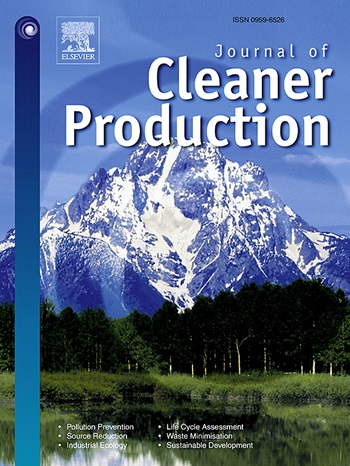Environmental Impacts and Carbon Reduction Benefits of Mining Photovoltaic Systems: A Case Study of Ningdong Coal Base
IF 9.7
1区 环境科学与生态学
Q1 ENGINEERING, ENVIRONMENTAL
引用次数: 0
Abstract
To investigate the impact of the construction of photovoltaic systems in mining areas (MPVs) on the local ecological environment, the lifecycle carbon emission reduction benefits of photovoltaics (PV) were assessed. This study used satellite remote sensing data to obtain the spatial and temporal distribution pattern of the Ningdong Coal Base PV power plant. The surface energy balance characteristics of MPVs were analysed using the Surface Energy Balance Algorithm for Land (SEBAL) time series, and the carbon emission reduction benefits were estimated using a life cycle assessment (LCA). The results show that the Ningdong Coal-based PV power plant covers an area of 95.34 km2 and is mainly located in the coal mining subsidence area. The construction of the PV power plant significantly impacted the characteristics of surface energy balance. 1-2 years after construction, vegetation growth in the PV area is better than in the Control area, evaporation has increased, and surface temperature and albedo have decreased. The Ningdong Coal Base MPVs have huge benefits in terms of carbon emission reduction. With an average annual electricity generation of 7.37×109 kWh, they can offset the cumulative electricity consumption after 2-3 years of operation. This study helps to understand the dynamic changes in the surface energy balance characteristics of the construction of PV systems in mining areas and provides valuable methodological guidance and data references for those involved in the technical research and decision-making of MPVs.矿业光伏发电系统的环境影响与碳减排效益——以宁东煤炭基地为例
为探讨矿区光伏系统建设对当地生态环境的影响,评估了矿区光伏系统的全生命周期碳减排效益。本研究利用卫星遥感数据获取宁东煤基光伏电站的时空分布格局。利用SEBAL时间序列分析了mpv的地表能量平衡特征,并利用生命周期评估(LCA)估算了mpv的碳减排效益。结果表明:宁东煤基光伏电站占地面积95.34 km2,主要位于采煤沉陷区内。光伏电站的建设显著影响了地表能量平衡特性。建设后1 ~ 2年,PV区植被生长情况好于对照区,蒸发量增加,地表温度和反照率下降。宁东煤炭基地mpv在碳减排方面具有巨大的效益。平均年发电量为7.37×109千瓦时,运行2-3年后可抵销累计用电量。本研究有助于了解矿区光伏系统建设过程中地表能量平衡特征的动态变化,为参与光伏系统技术研究和决策提供有价值的方法指导和数据参考。
本文章由计算机程序翻译,如有差异,请以英文原文为准。
求助全文
约1分钟内获得全文
求助全文
来源期刊

Journal of Cleaner Production
环境科学-工程:环境
CiteScore
20.40
自引率
9.00%
发文量
4720
审稿时长
111 days
期刊介绍:
The Journal of Cleaner Production is an international, transdisciplinary journal that addresses and discusses theoretical and practical Cleaner Production, Environmental, and Sustainability issues. It aims to help societies become more sustainable by focusing on the concept of 'Cleaner Production', which aims at preventing waste production and increasing efficiencies in energy, water, resources, and human capital use. The journal serves as a platform for corporations, governments, education institutions, regions, and societies to engage in discussions and research related to Cleaner Production, environmental, and sustainability practices.
 求助内容:
求助内容: 应助结果提醒方式:
应助结果提醒方式:


